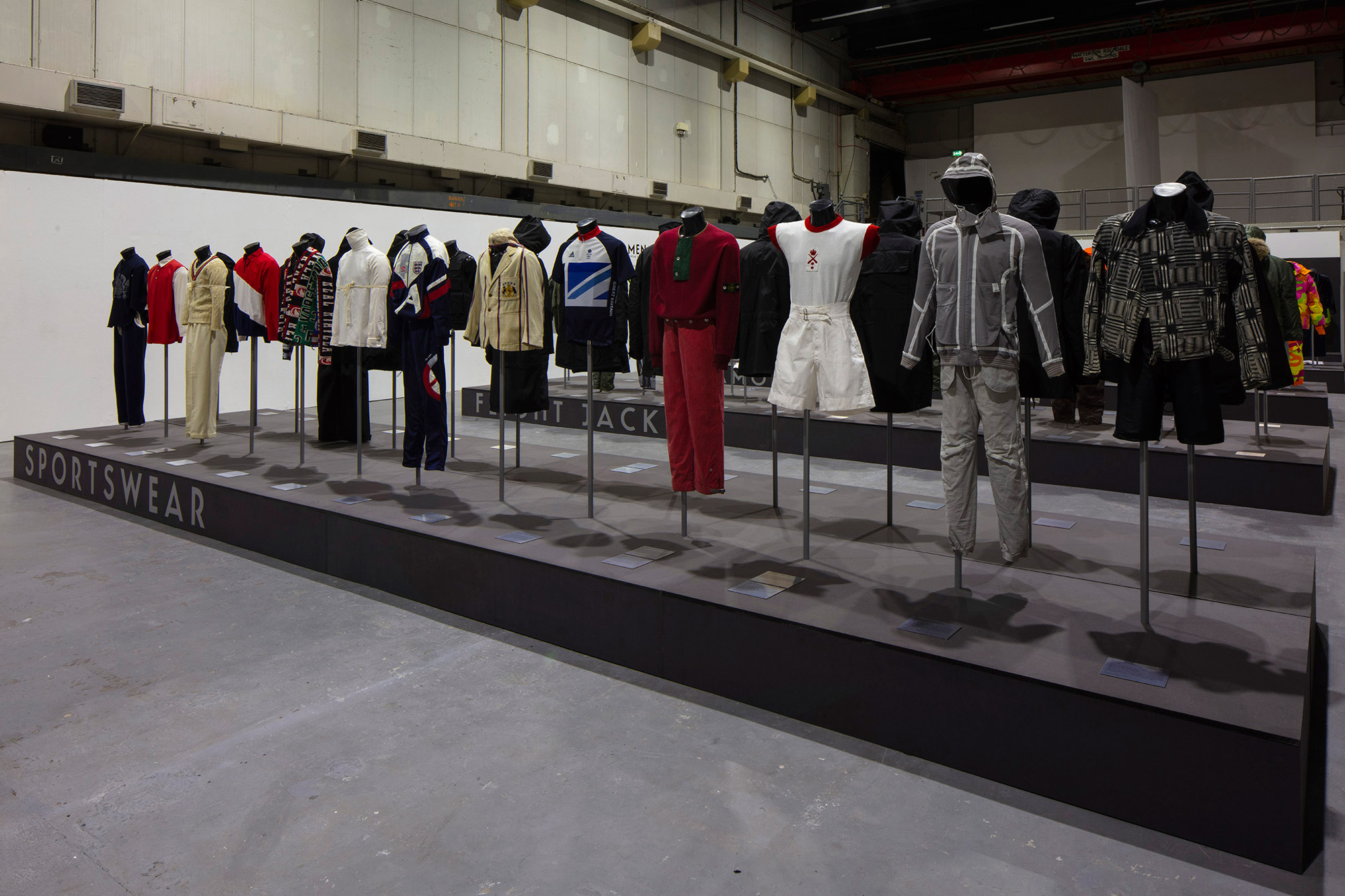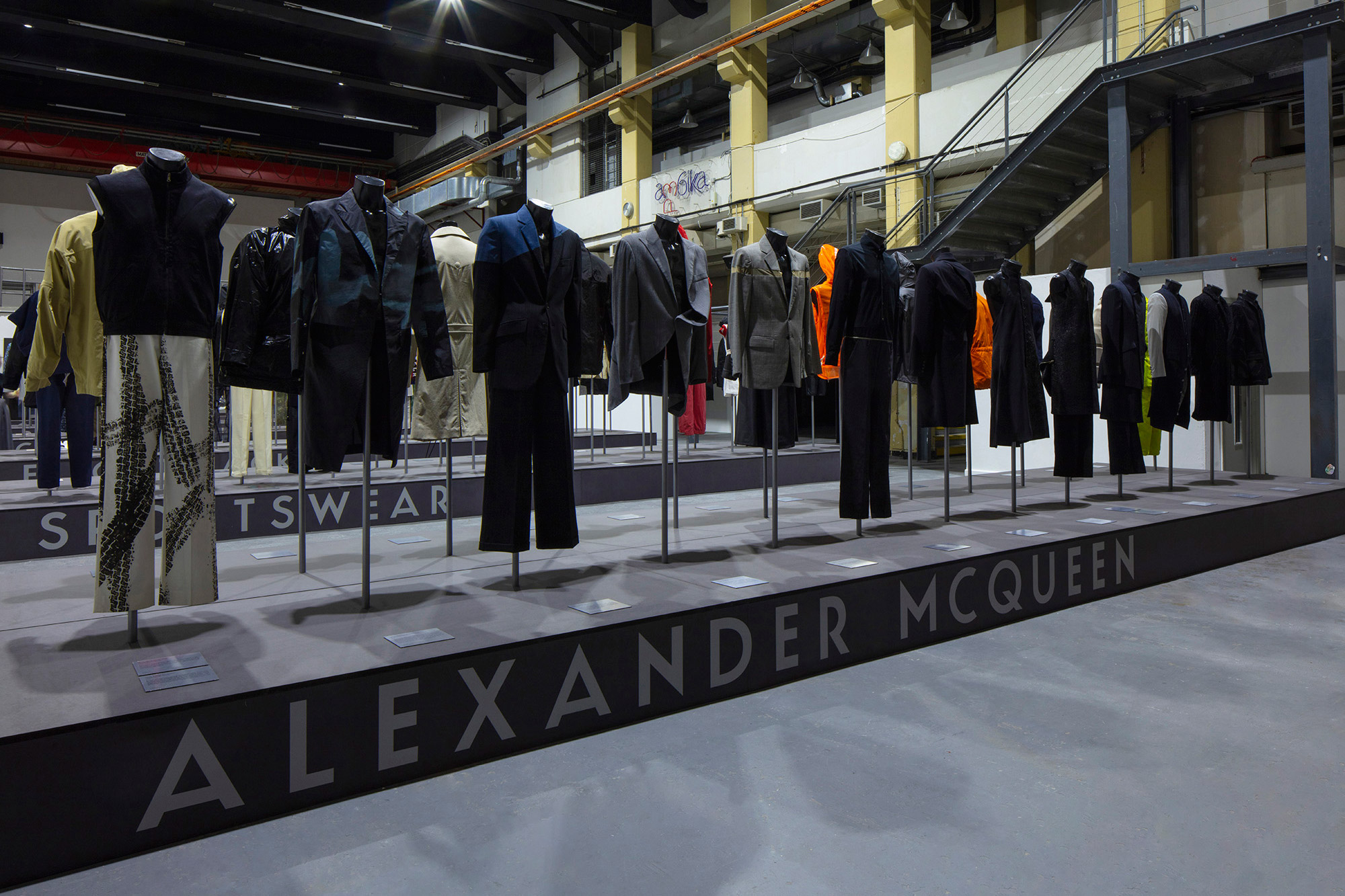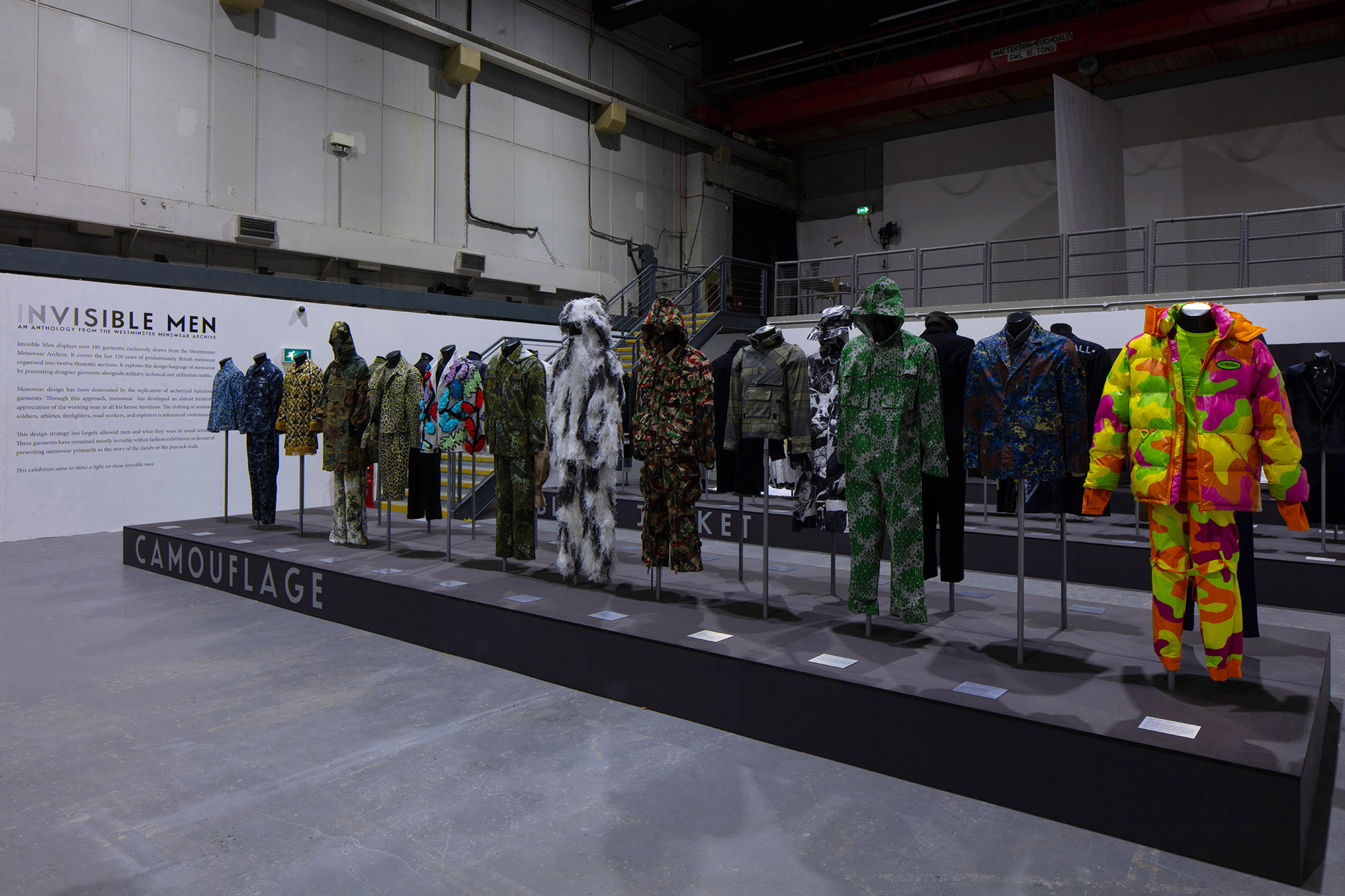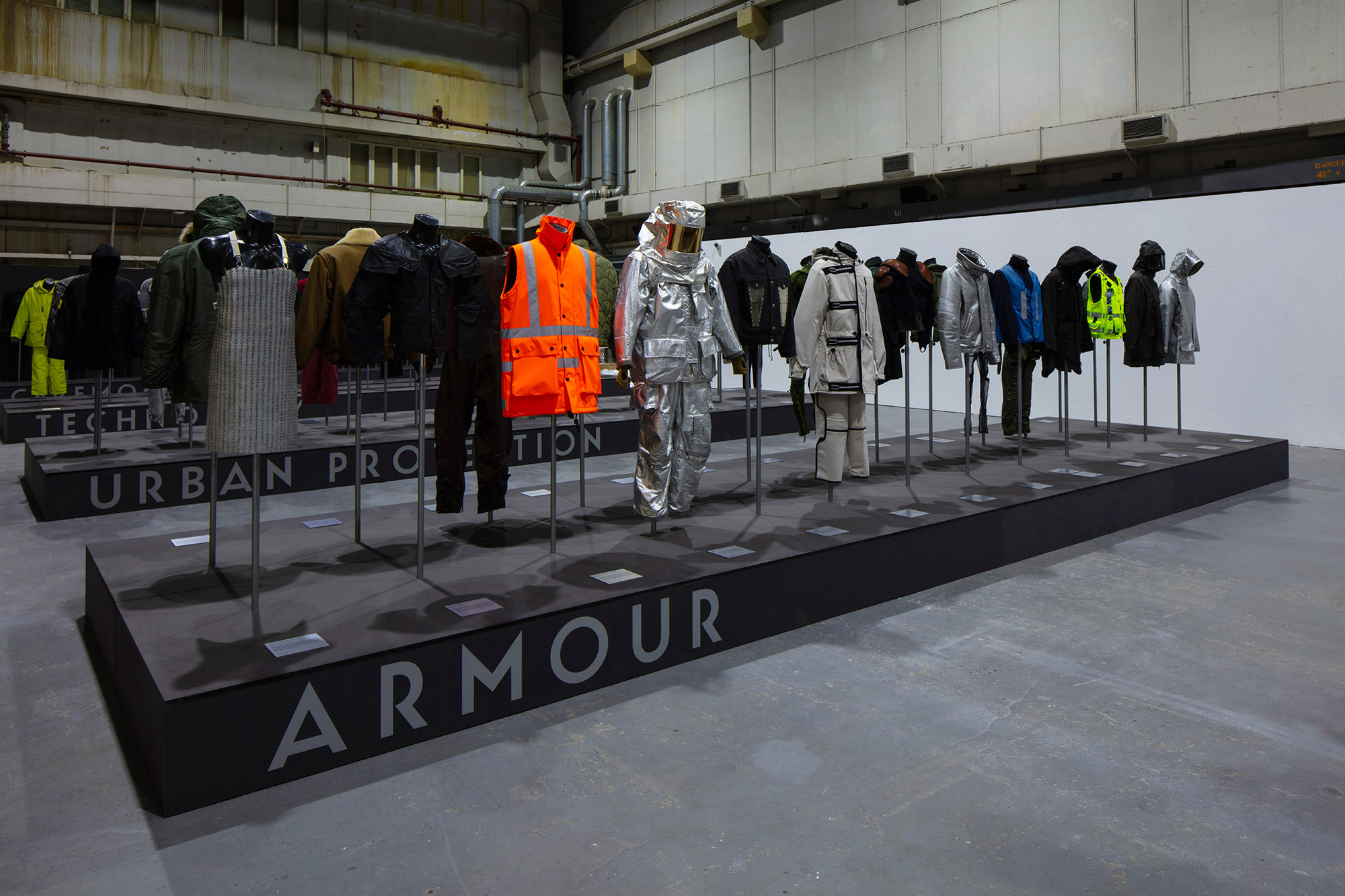Invisible Men exhibition – Westminster Menswear Archive
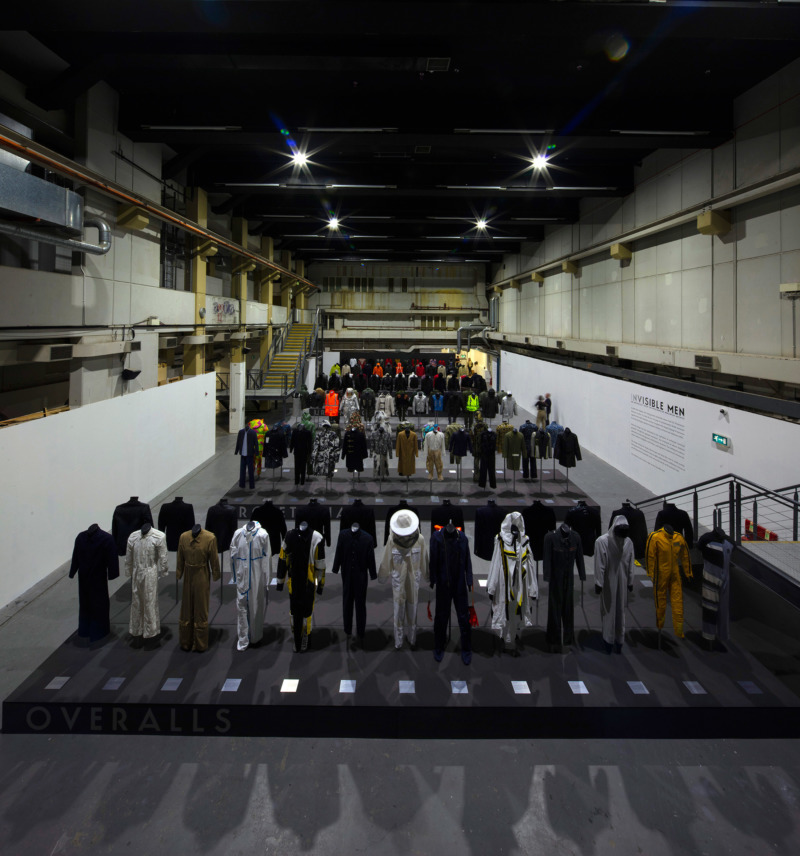
This October, the Westminster Menswear Archive seeks to shine a light on the last 120 years of menswear in what will be the UK’s first-ever exhibition devoted solely to menswear. Curated by Andrew Groves and Dr Danielle Sprecher, Invisible Men boasts an impressive collection of 170 garments from the archive which, for the last three years, has been functioning primarily as a teaching resource for students of Westminster. What has remained invisible is at last in the spotlight, and it is now open to the public and industry professionals alike.
On entering the Invisible Men exhibition, the first thing that strikes you is the sheer volume of the collection. Exhibition curator Andrew Groves explains that this is entirely intentional; “I wanted to overwhelm people”, he says, “you don’t realise the absence until it is pointed out to you”.
The absence of menswear exhibitions came to Grove’s attention after starting the archive three years ago where the necessity for a collection focused solely on menswear became increasingly apparent. This exhibition uniquely places menswear under the same inspection womenswear has been under for centuries.
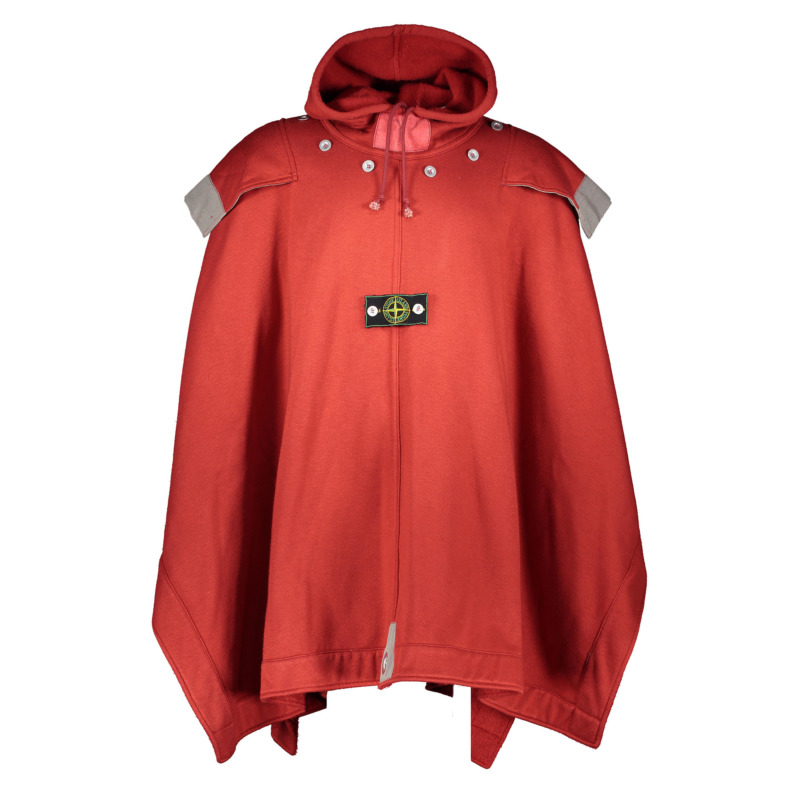
The exhibition is divided into twelve thematic sections. Each section emblematic of the functions we associate men’s clothing to be affiliated with such as military, sportswear, and utilitarian. This is somewhat indicative of the weight we place on menswear being prized first and foremost for its functionality, ease, and prowess. However, each section is a diverse range of the highly practical, and the wonderfully subverted.
In the designated ‘Flight Jacket’ section a traditional Clovinex U.S Navy Flight suit (1939-1945) sits next to the eroticized Transparent Trousers of Meadham Kirchhoff (2014). The contrast in these garments is primarily in their fabric makeup which is something Groves was keen to explore in the collection. “Sometimes the difference between Utilitarian and designer is astounding, you may not need to change the design but the fabric. The ability to touch those garments and understand the materiality; that is the key.” This is why the archive is accessible to all students and indeed anyone who wishes to learn from it. Touching and pattern taking from the designs are encouraged and it is this type of interaction with the garments that it usually unfamiliar in a museum setting.
Where the rest of the collection is divided by function, one segment is dedicated solely to the work of Alexander McQueen. A pair of zipped overalls feature McQueen’s iconic garment slashing as seen in his 1998 collection Golden Shower. McQueen had developed into one part of the zip opening a section that allows the small of the back to be seen, which he is quoted as saying is ‘the most sensual part of the body.’ Boasting the sometimes nuanced and often wild romance synonymous with McQueen, this selection is an example of menswear that is equal parts fine tailoring and creativity. McQueen is unparalleled in his ability to simultaneously ‘make a man’ whilst also addressing ‘the man underneath’. So why then were none of these garments included in the V&A’s Savage Beauty exhibition? Or indeed any exhibition until now. The absence of his Menswear in these exhibitions somewhat dismisses the five years spent on Saville Row learning the art of garment construction which often creates such elegance in his work.
The reluctance of fashion houses to display and celebrate their menswear collections and history seems counterintuitive in today’s industry where the exhibition is an increasingly popular marketing platform. While it may in part be due to the belief that a menswear collection won’t encourage as wide patronage and attendance, Groves believes the answer may be disclosed in the private and somewhat secretive nature of menswear. “Perhaps men don’t want to be understood. There is a complexity that is very much secretive or coded- but it is there.”
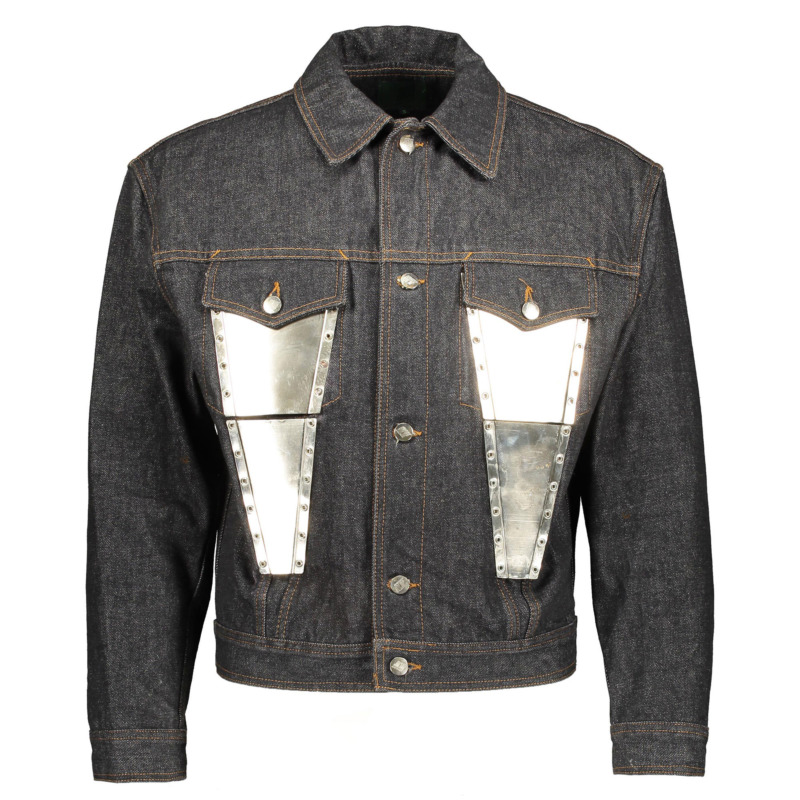
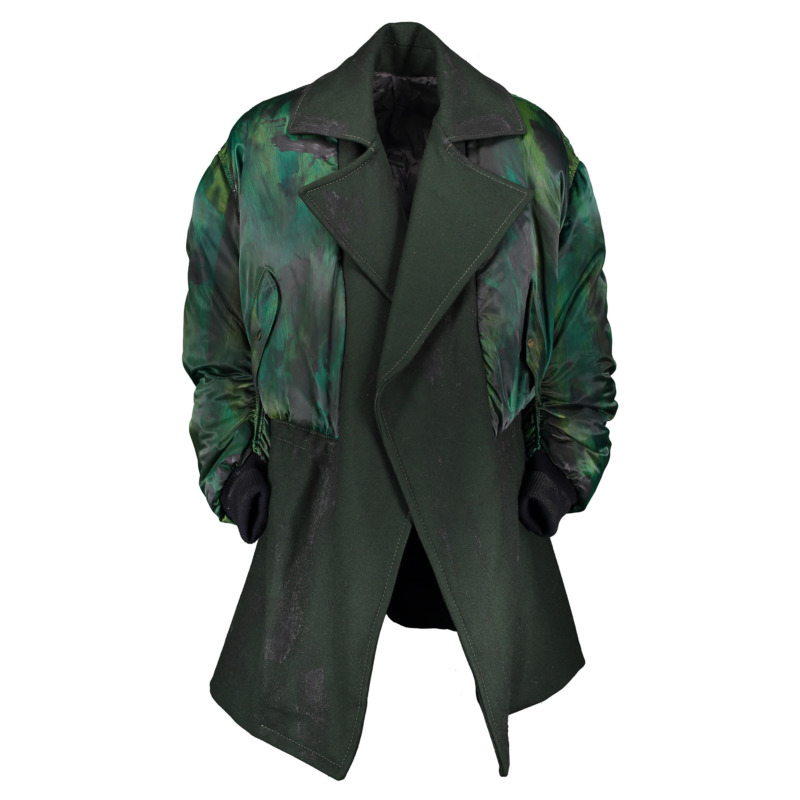
Although the collection is diverse and varied, this complex coding of the often gratifying and self-satisfying nature is the similarity that affords a coherence to the collection. Be it the hidden noise-proof headset of ‘The Life Jacket’ by the C.P Company (2000), or the barely-there detail in the fabric of the ‘Flocked Jacket’ by Carol Christian Poell (2002), the sartorial sign is frequently disguised, unseen or unrecognised. This secretive coding is seen in not only historical references but in the contemporary designs which are included in the collection. A Liam Hodges hand-painted coat proves an example of contemporary garment hybridity, combining a nylon jacket with wool, in a military-style coat. Although seemingly the epitome of functionality (a theme the exhibition is at pains to highlight is fetishized in menswear), it is decorated with sublimation printing and hand-coloured using ink pens. This freehand artistic embellishing is a nod to something free and beyond function, not dissimilar to the ‘expressive’ nature of experimentation celebrated in womenswear.
Today the role of the curator is perhaps more influential than ever, constructing what we look at and how we look at it. Exhibitions such as Invisible Men speak to not only the content they provide but the context they are produced in. The fact that the archive has grown primarily through eBay purchases somewhat captures the zeitgeist of this generation, where fashion is primarily navigated and negotiated online. Similarly, in lieu of today’s ideals, the exhibition is in no way class focused and instead disregards the idea of a focused narrative, which often results in the bowing to economies and aristocracy under the guise of design. Instead, Invisible Men is a celebration of all Menswear design and the multifaceted service it provides the man underneath. It presents the rich past of menswear and allows us to encounter this first hand, whilst also nodding towards a future where menswear takes its rightful place in the spotlight.
Invisible Men is on view until 24 November 2019 at Ambika P3.

